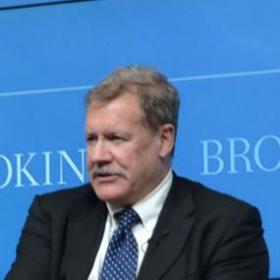
Recalling Moses: Bridging the Red Sea
According to the shared religious tradition of Judaism, Christianity and Islam, the prophet Moses was inspired by God to use his staff to part the waters of the Red Sea, temporarily providing a land bridge on which the Israelites could cross the waters. Notwithstanding some linguistic analysis suggesting that the body of water referred to in early texts may not have been the Red Sea, the idea of bridging the Red Sea has a high political relevance today.
The Red Sea is bordered on the West by Egypt, Sudan, Eritrea and Djibouti, and on the East by Saudi Arabia and Yemen. In the north, touching the Gulf of Aqaba in the Red Sea are Israel and Jordan. Somalia is not a Red Sea littoral country but, sitting on the Gulf of Aden, commands the waterway linking the Red Sea to the Indian Ocean.
The news this past week of Saudi deportation of an Eritrean Christian for proselytizing (instead of executing him) is a small glimmer of hope in an all too grim narrative of civil conflict, political repression and humanitarian problems. For example, just this month in Yemen, air strikes continued against extremists in the south of the country linked to Al Qaeda, while protesters and security forces continued violent clashes in a number of cities over political liberalization.
Linkages across the Red Sea deserve more attention. For example, President Bashir of Sudan met with King Abdullah of Saudi Arabia this month to discuss the difficulties of transition by Sudan after the secession of South Sudan. These difficulties include civil conflict, repression and state-sponsored violence. Just last week, Saudi Arabia officially recognized South Sudan as an independent state, but Saudi news sources describe Sudan as a “close ally” of the kingdom. There are about half a million workers from Sudan (north and south) in Saudi Arabia.
By contrast, Eritrea is something of a pariah state among its neighbours, in large part because of its support to terrorist groups, notably Al Shahab in Somalia, and military occupation of small parts of Djibouti territory. A recently completed report by a UN Monitoring group has reportedly recommended a stiffening of UN sanctions against Eritrea. The country has just been accused by the United States of covering up a large scale humanitarian disaster.
If ever a region needed creative new thinking, new dialogue and indeed an improvement in regional collaboration, the Red Sea littoral surely is one. The active Saudi diplomacy on political unrest in Yemen and Egypt in the first half of 2011 is a key marker of the need for and potential of a stronger Red Sea political community.
Critics might complain: do we need yet another regional organization? There is after all a number of institutions where these countries can meet to promote dialogue, common political interests and economic prosperity if they were so inclined. For the moment, they are not even so inclined.
The pundits should not decide. Given the emergence of stronger civil society activism in some countries of the region, and given the high need for more effective policies to promote peace, security and prosperity, the idea of a Red Sea political and economic community is certainly worth canvassing at an unofficial level. Of the littoral countries, only Saudi Arabia has the resources to fund such a regional dialogue. This would be a useful course of action for the Saudi government to consider.
At the same time, there can be a useful role for external actors, either governmental or non-governmental, to promote new regional dialogues on security and economic relations among Red Sea states and communities. The idea of a Red Sea community can be used as a unifying and peace-building idea in this troubled region.

